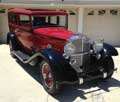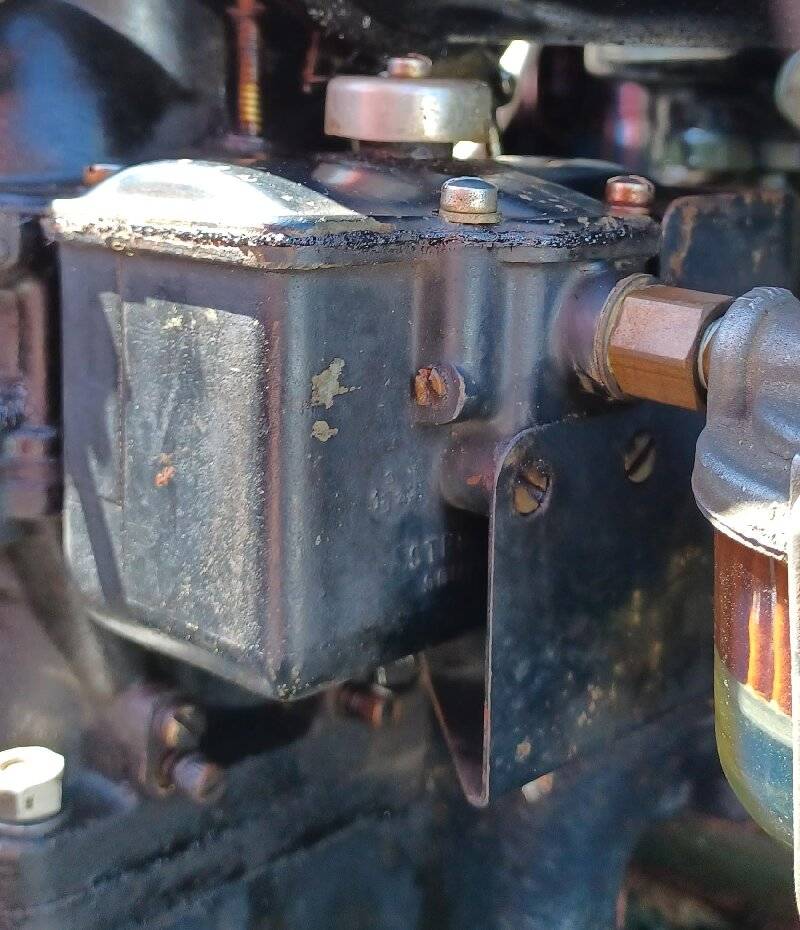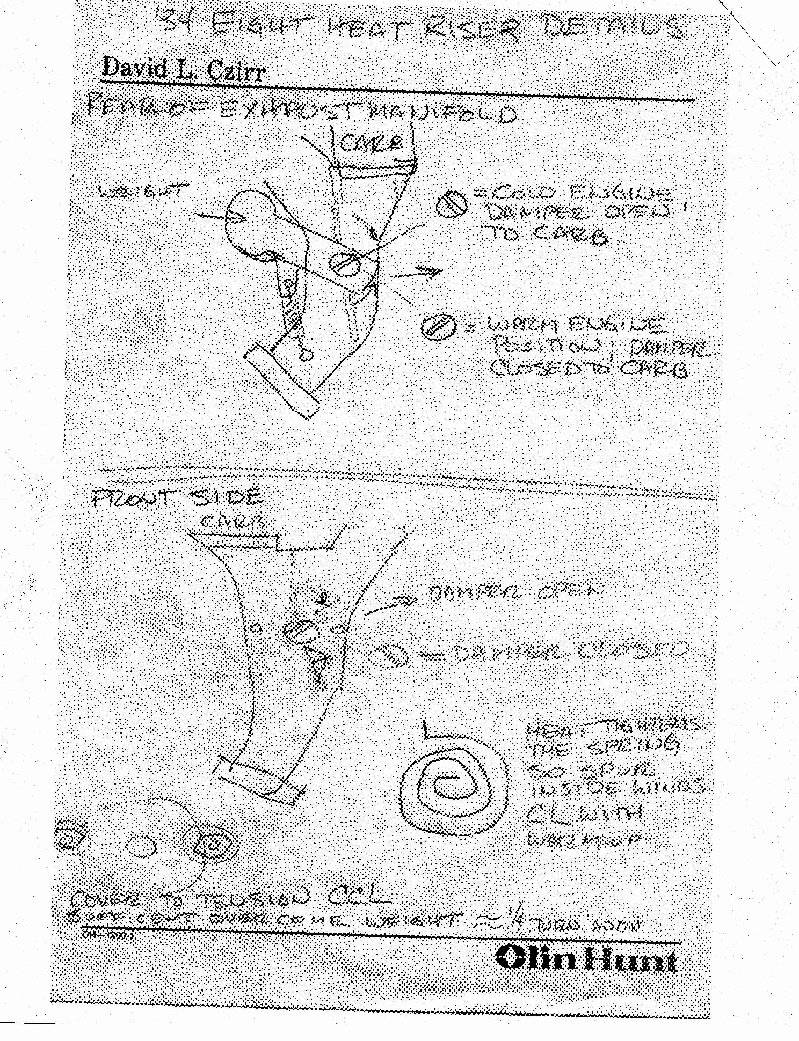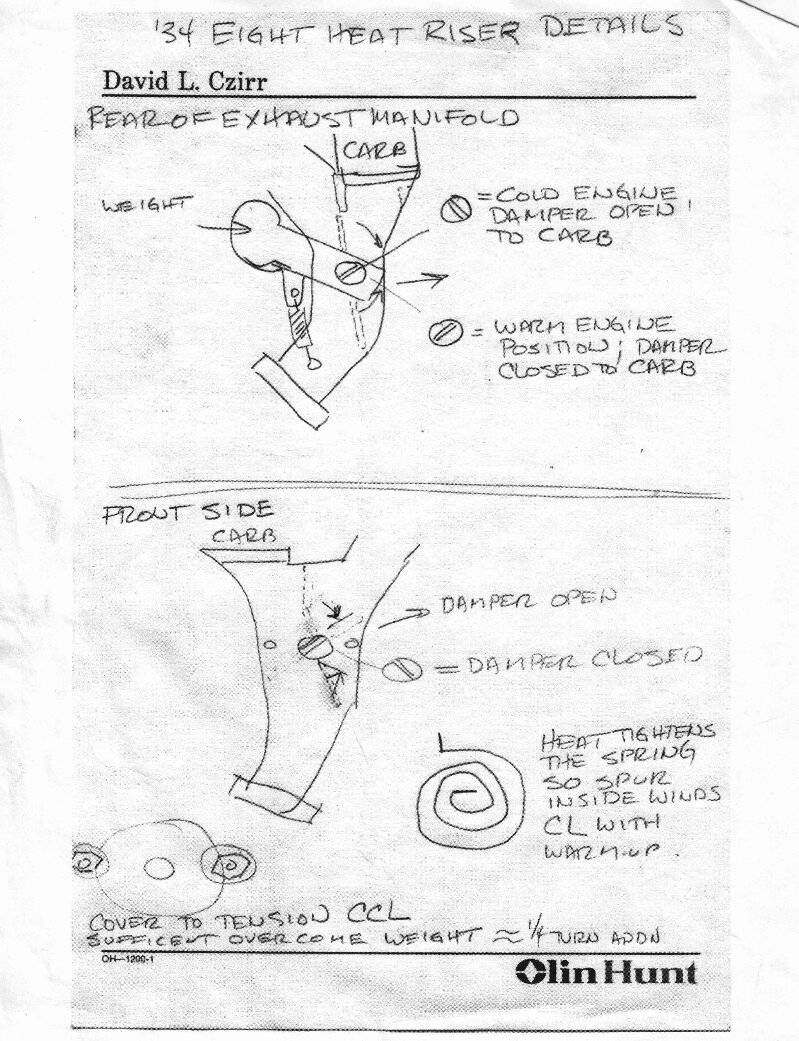|
Re: '32 901 Sedan - Vapor Lock
|
||||
|---|---|---|---|---|
|
Forum Ambassador

|
Getting a good picture of the EE-22 heat defector proved problematic. Best way was probably to either remove the carburetor from the engine, or remove the hood, air cleaner and distributor and photograph from above and the far side. I wasn't ready to do either.
So here's a photo which I hope will be helpful. I would describe the deflector as follows: a 3-sided box, 2 vertical panels at 90 degrees to each other, and a bottom panel. The two vertical or side panels partially cover the front of the fuel bowl (as shown in my photo) and the side of the bowl facing the exhaust manifold. The lower panel covers in part the base or floor of the fuel bowl nearest the exhaust manifold. I hope this is helpful.
Posted on: 2023/9/18 13:35
|
|||
|
||||
|
Re: '32 901 Sedan - Vapor Lock
|
||||
|---|---|---|---|---|
|
Just popping in

|
re : vapor lock
I must respectfully disagree with some of the posters regarding vapor lock - what it is, and how to stop it. A review of Packard tech. and engineering publications, beginning in the early 1930's, confirms they were well aware of the problem. To get surer starts in cold weather, refiners were helping with ever higher Ried Vapor Pressures (translation...easier to get the fuel to vaporize at ever lower temps). By the early 1930's, gasoline became MUCH more likely to boil over and become a vapor in the fuel lines than fuels of even a few years earlier. Solution? (apparently not known or even thought of by Packard's tech. folks... ? ? ) A electric fuel pump mounted as low as and as close to the gas tank as possible. This puts all the gas in the lines under pressure (as oppose to suction) virtually eliminating vapor lock.
Posted on: 2023/9/18 16:06
|
|||
|
||||
|
Re: '32 901 Sedan - Vapor Lock
|
||||
|---|---|---|---|---|
|
Home away from home
|
You are correct re: "vapor lock". However, Packard engineers were well aware of it and its causes and took steps to prevent it. Carburetors are affected by high heat, but that's rarely vapor lock, if it ever is. Volatile fuel will boil in carburetors, which typically causes flooding. Today's EPA/CARB gas is often too volatile for carbureted, atmospheric systems operating in hot weather. Flooding after a hot shutdown is very common, and vapor lock can be an issue. Minimizing pressure drop on the suction side of the system and keeping heat to a minimum on the rest of it will minimize or prevent problems under most conditions. Hot weather and high altitude operation will aggravate any tendency to flood and/or vapor lock. My '37 120 is missing the fuel pump heat shield and fiber washers at the fuel pump. It is very prone to vapor lock in hotter weather and after a hot shutdown. A heat shield and fiber washers would improve the situation, and some sort of heat deflector would reduce hot carburetor issues.
Posted on: 2023/9/18 19:15
|
|||
|
||||
|
Re: '32 901 Sedan - Vapor Lock
|
||||
|---|---|---|---|---|
|
Home away from home

|
Dave thanks for the picture it was a big help. Based on that and your description, I’m going to make a heat deflector. I’d had thought that an electric pump might be a possible solution and had scoped out a couple of locations near the tank to tie into.
Last week I replaced the regular with premium and drove the car around without issue. However, the temperature was 12 to 15 degrees cooler so it wasn’t much of a test. Not sure if we are going to get another 90+ day here before next year, but if we do I try to take it for a spin. I’m also looking into the heat riser valve as a possible contributing cause. The springs on mine are missing along with the cover. Since we don’t have extremely cold days here in So. Calif. I thought I had wired mine in the closed position, but it wasn’t.
Posted on: 2023/9/19 9:56
|
|||
|
||||
|
Re: '32 901 Sedan - Vapor Lock
|
||||
|---|---|---|---|---|
|
Home away from home
|
Wire it with the weight UP. It's best to have it working as it should, if you can get the parts to fix it. Carburetors can get very cold due to fuel evaporation and pressure drop before the engine warms up, even in warm weather. This can lead to moisture condensation in the intake and even frost. Any problems usually go away once the thermostat opens and warm air floods the underhood area. For fast warmup and best gas mileage and proper automatic choke operation and smoother running in cool damp weather, the heat valve needs to be working.
Posted on: 2023/9/19 11:19
|
|||
|
||||
|
Re: '32 901 Sedan - Vapor Lock
|
||||
|---|---|---|---|---|
|
Forum Ambassador

|
Glad to see that my old sketch of the heat riser configuration is still being useful!
Posted on: 2023/9/19 13:39
|
|||
|
||||
|
Re: '32 901 Sedan - Vapor Lock
|
||||
|---|---|---|---|---|
|
Home away from home

|
Dave:
Thanks Again for the photo in reply #12. Based on your description there should be enough for me to come up with heat shield. When I loosen one of the screws that attached it to the carburetor, I discovered that they go into the bowl. Do you know if that is true of yours? I don't want you to loosen one of your screws to find out because I don't want you to create a leak.
Posted on: 2023/10/6 10:26
|
|||
|
||||
|
Re: '32 901 Sedan - Vapor Lock
|
||||
|---|---|---|---|---|
|
Home away from home
|
Error Note: Weight DOWN is open (hot) position on 120 models.
Posted on: 2023/10/6 12:44
|
|||
|
||||
|
Re: '32 901 Sedan - Vapor Lock
|
||||
|---|---|---|---|---|
|
Forum Ambassador

|
Marty, I assume you are referring to the two screw heads on the fuel bowl just below the inlet. It's been more than 45 years since I did that carburetor work and I just don't recall if those screws retain the shield or it it just nests over them but tend to think the shield just nests over them. In either case I'll have the car out for a show Sunday and will try to get you a definitive answer then.
Posted on: 2023/10/6 19:53
|
|||
|
||||

 EE 22 heat deflector 2.jpg (241.99 KB)
EE 22 heat deflector 2.jpg (241.99 KB)









